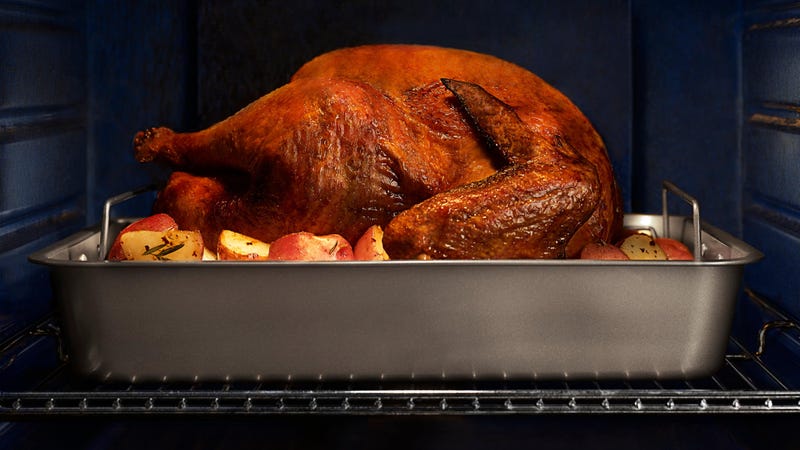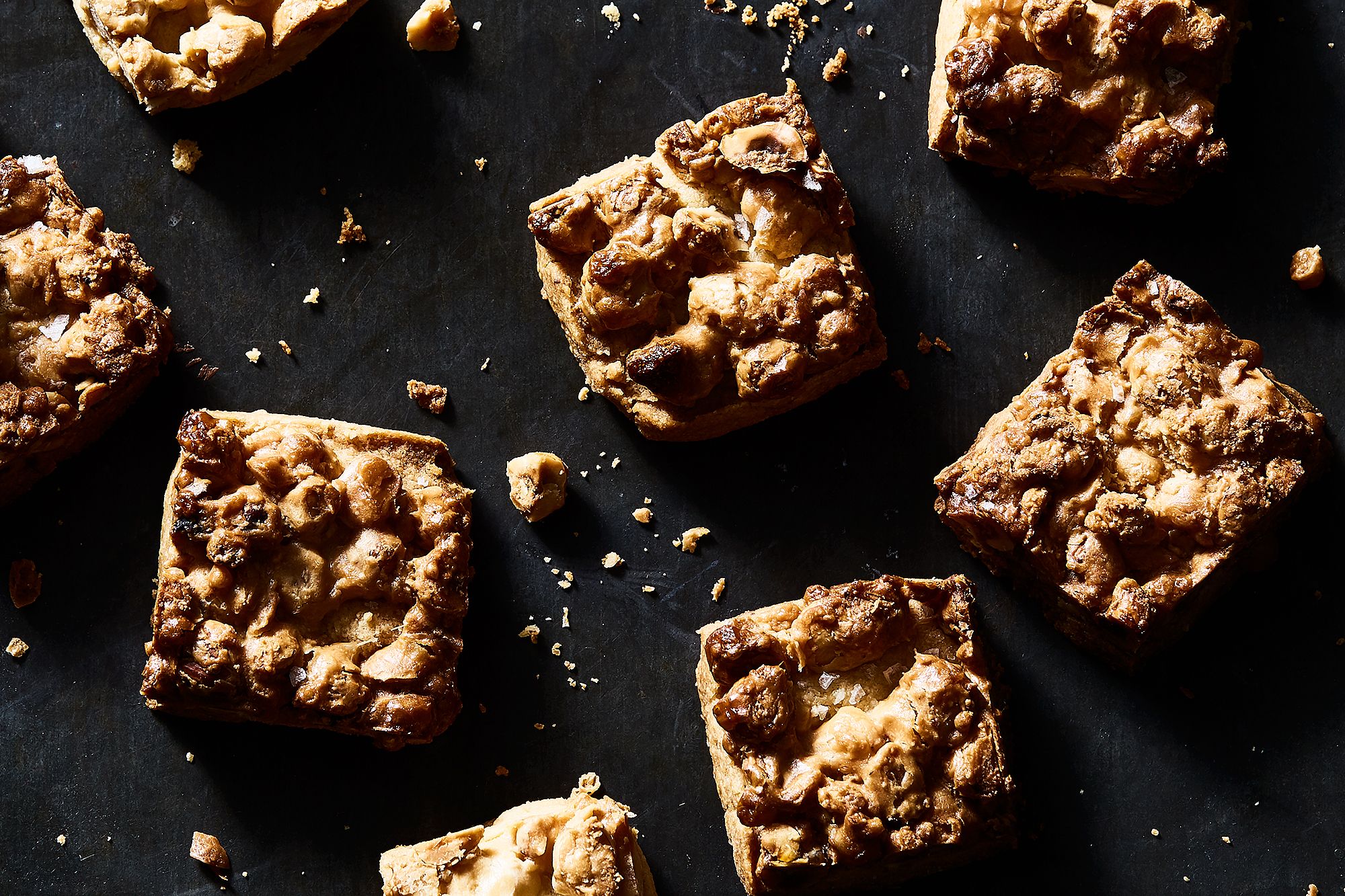Fortune may favor the bold, but Thanksgiving favors the prepared. Prepping your oven for Turkey Day may seem like overkill, but repairmen can be hard to schedule (getting out to your home can take weeks!), and it’s best to identify any oven issues well ahead of time so as not to add to your peak holiday stress. Check your oven for potential issues now, and you’ll have plenty of time to fix before pie baking season.
Make sure it’s not lying with an oven thermometer
First, make sure your oven isn’t a lying liar that lies. Baking things is something of a trust exercise: You press some buttons to set the temperature, the oven tells you when it has reached that temperature, and you put the food in the oven, never questioning the veracity of the appliance’s claim.
Being off by a few degrees isn’t the biggest deal, especially if all you’re doing is roasting vegetables and baking potatoes. But larger temperature discrepancies can cause problems, especially with more finicky baking projects, dishes with long cook times (like the giant ceremonial bird), and new recipes.
Photo: Deeanna Williams (Shutterstock)
Checking the accuracy of your oven’s temperature display is very easy: Get an oven thermometer and use it. Your oven’s internal thermometer only reads the temp of the location where it was installed, usually towards the back or in the front. Food, as you know, doesn’t get cooked in the back or front of the oven—it gets cooked in the center. So grab an external thermometer and place it there. (Brand-wise, Cook’s Illustrated recommends this basic, very cheap dial face model, but you can also use a digital probe model, like this one from Thermoworks.)
Set your thermometer (or thermometer probe) in the center of your oven and set the temperature to 350℉. Once the oven says it’s heated to the target temperature, check your thermometer and write the actual reading down. Repeat every 15 minutes for two hours, then take the average by adding all the readings together and dividing that sum by the number of readings—that’s your oven temperature. (Averaging will account for any fluctuations caused by cycling, i.e., your oven turning off and on to maintain the target temp.)
If your oven has been lying all along, you can set it straight by adjusting your oven’s temperature dial. The steps involved will be slightly different for every make and model of oven, so check your owner’s manual. (ThermPro has an outline for the procedure here, but I cannot guarantee it’s geared to the oven in your kitchen.)
Check for hot spots with coconut and bread
Even if your oven is giving accurate temperature readouts, it’s unlikely the whole oven is the exact same temp in every single spot. Most ovens have hot spots and cold spots, and you can map them using shredded coconut.
To make a map, set your oven to 350℉ and scatter some shredded coconut on a sheet pan in an even layer. Place the sheet pan in the oven, and take note of which spots brown the fastest (and the slowest).
If you want to map your broiler in a similar fashion, grab a bunch of sliced bread, lay it out on a sheet pan (or directly on the rack) and give the slices a broil, taking note of which pieces brown the fastest.
Consult the maps as needed to prevent your delicious dishes from overcooking, undercooking, or flat-out burning
Clean the dang thing
If you do nothing else to prepare your oven for Thanksgiving, at least give it a deep clean. Old, stuck-on food and grimy grease spots can smoke or catch fire and ruin your food (and—in some extreme cases—your entire oven), so get rid of them.
The self-cleaning function can be used sparingly to incinerate built-up gunk (make sure all grease is wiped out first so you don’t start a grease fire), but if yours doesn’t have one of those, or you don’t want to use it, you can get the job done with ammonia, dish soap, and baking soda. (Watch the above video to learn how.)
This article was written by Claire Lower from Lifehacker and was legally licensed through the Industry Dive publisher network. Please direct all licensing questions to legal@industrydive.com.








